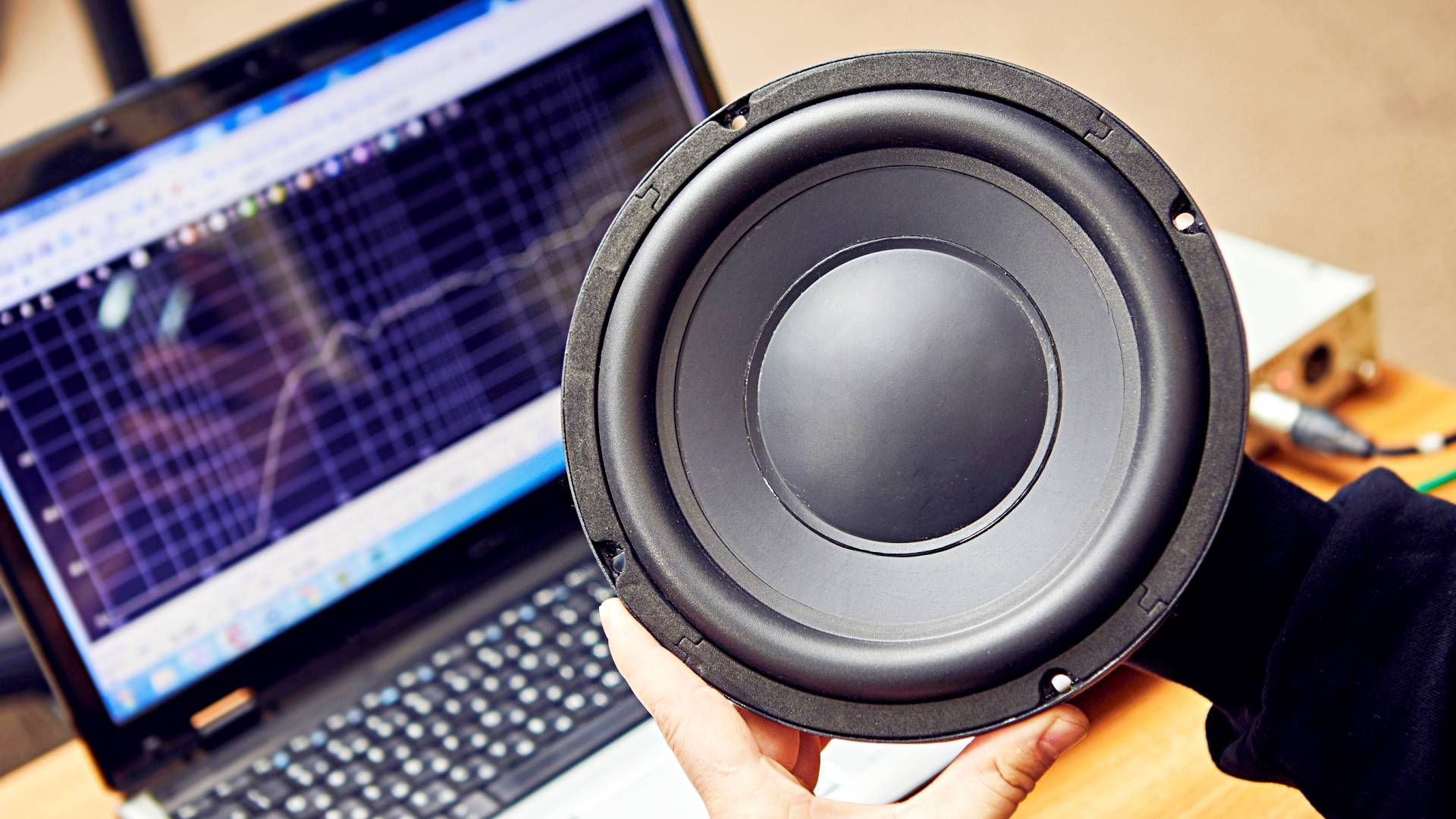
What Makes a Speaker Good? The Science and Art of Speaker Design
Designing a great speaker is a complex blend of scientific principles and artistic finesse. While accurate sound reproduction is the goal, the process involves a range of factors that must be carefully balanced.
The Importance of Accurate Sound Reproduction
A good speaker aims to reproduce sound as faithfully as possible. This means minimizing distortion and maintaining clarity across all frequencies. High-quality speakers aim to minimize coloration, allowing you to hear the music as closely as possible to how it was intended by the artist. Achieving this level of accuracy requires careful material selection, precise tuning, and extensive testing.
Balancing Science and Subjectivity
Speaker design isn’t just about measurements; subjective listening tests also play a crucial role. Even if a speaker measures well in terms of frequency response and distortion, it may still fail to deliver the immersive experience that listeners crave. Speaker designers often rely on both technical data and hands-on listening sessions to refine the final product and ensure it delivers both precision and emotional impact.
Tuning for Different Listening Environments
Not all speakers perform equally well in different settings. A speaker that sounds fantastic in a small, acoustically treated room may struggle in a large, open space.Designers consider various environments, fine-tuning the speaker’s features to suit its intended use.. The goal is to produce consistent quality, whether the speaker is used for casual listening or critical audiophile sessions.
How to Know If a Speaker Is Good?
Choosing a high-quality speaker requires evaluating several key factors that affect sound performance and durability. Here’s what to consider:
- Frequency Response – A wider frequency range (e.g., 20Hz–20kHz) ensures better reproduction of lows, mids, and highs.
- Sound Clarity & Detail – Listen for clear vocals, instrument separation, and minimal distortion at different volumes.
- Bass & Treble Balance – A good speaker should produce deep, punchy bass without overpowering mids and highs.
- Power Handling (Wattage) – Check if the speaker’s power rating matches your amplifier to prevent distortion or damage.
- Sensitivity (Efficiency) – Measured in dB, higher sensitivity (above 85dB) means the speaker requires less power to deliver louder sound.
- Build Quality & Materials – Durable materials (e.g., Kevlar, aluminum, or high-density plastic) enhance longevity and audio fidelity.
- Crossover Quality – A well-designed component crossover properly distributes frequencies between tweeters, midrange, and woofers for balanced audio.
- Impedance Matching – Ensure the speaker’s impedance (e.g., 4Ω, 8Ω) is compatible with your audio system for optimal performance.
Testing speakers in different environments and comparing multiple models will help determine the best choice for your needs.
5 Key Factors That Determine Speaker Quality
Several key elements determine the overall quality of a speaker. Understanding these factors helps in evaluating a speaker’s performance:
- Frequency Response:
The range and consistency across frequencies. A flatter response generally indicates more accurate sound reproduction, though some listeners may prefer slight tonal adjustments based on personal preference. - Driver Materials:
Materials like aluminum or carbon fiber, due to their stiffness, can help reduce distortion. However, sound clarity is the result of a complex interplay of factors, including driver design, magnetic systems, damping techniques, and more. This makes speaker design a nuanced and sophisticated process that goes beyond just material selection. - Enclosure Design:
A well-designed enclosure minimizes unwanted vibrations, preventing resonances that can interfere with sound clarity. - Crossover Circuit:
A well-tuned crossover ensures seamless transitions between different frequency ranges (bass, midrange, treble), resulting in balanced and cohesive sound. - Manufacturing Consistency:
High-quality control ensures that each speaker unit performs similarly, preventing variability that could affect stereo imaging and sound quality.
Common Pitfalls in Speaker Design
Speaker designs can encounter challenges that may affect sound quality, though advances in technology have significantly reduced the impact of these issues. Some of the key pitfalls include:
- Enclosure Resonance:
Poorly designed cabinets can vibrate in sympathy with certain frequencies, adding unwanted noise that distorts the sound. - Low-Quality Drivers:
Inexpensive or poorly constructed drivers can struggle with certain frequencies, leading to harsh highs or muddled lows. - Simplified Crossovers:
In budget models, cost-cutting often results in basic crossover circuits that cause uneven sound distribution, impacting the overall listening experience. - Outdated Design Philosophies:
Some high-end speakers may prioritize aesthetics, potentially affecting sound accuracy. However, many manufacturers strive to balance both design and performance, so it’s important to evaluate each product on a case-by-case basis. - Inconsistent Manufacturing:
Inconsistent quality control can occasionally lead to mismatched pairs or defects, which might affect stereo imaging, though such issues are rare among reputable manufacturers who adhere to stringent quality standards.
The Role of Price in Speaker Quality
Price can be an indicator of speaker quality, but it’s not always a direct correlation. As you move up from budget models, the improvements in design and materials typically become evident in the clarity, detail, and range of the sound. More expensive speakers often feature better drivers, sturdier enclosures, and more advanced crossovers, resulting in superior performance.
However, price doesn’t guarantee better sound—some high-end speakers may prioritize unique sound characteristics that cater to specific tastes, which might not align with everyone’s preference for accuracy. While spending more can often get you closer to a live performance experience, it’s important to consider the value of those features in relation to your listening needs. Practical elements like room size and listening habits should guide your investment rather than simply aiming for the highest-priced option.
Why Do Speakers from Different Brands Sound So Different Despite Belonging to the Same Type?
Even if speakers from different brands share similar appearances or hardware specifications, their sound can vary significantly due to each brand’s unique tuning style and acoustic engineering.
Every brand has its own distinct acoustic signature, crafted by their sound engineers using specialized software and proprietary techniques.
These unique approaches influence factors like tonal quality, bass depth, and treble clarity, resulting in the signature “sound aesthetics” associated with each brand. The expertise and closely guarded secrets behind each brand’s acoustic design contribute to these differences, shaping the overall listening experience in subtle yet impactful ways.
The Core Role of Speaker Manufacturers in Speaker Types and Audio Experience
Regardless of a brand’s unique tuning style or acoustic signature, the manufacturing craftsmanship and quality provided by speaker manufacturers are the true foundation of sound quality. A well-engineered speaker is the foundation; only then can a brand’s tuning efforts create a superior audio experience.
The precision in material selection, construction techniques, and attention to detail in the manufacturing process are what ultimately determine the performance of the speaker. Without this solid foundation, even the best tuning and adjustments may struggle to achieve optimal sound quality.
Partner with Jazz Hipster for Premium Speaker Manufacturing Solutions
Looking for a reliable partner to bring your audio products to life? Jazz Hipster offers top-tier OEM/ODM speaker manufacturing services that combine cutting-edge technology with decades of acoustic expertise. Contact us today to explore how we can collaborate on your next audio innovation.




